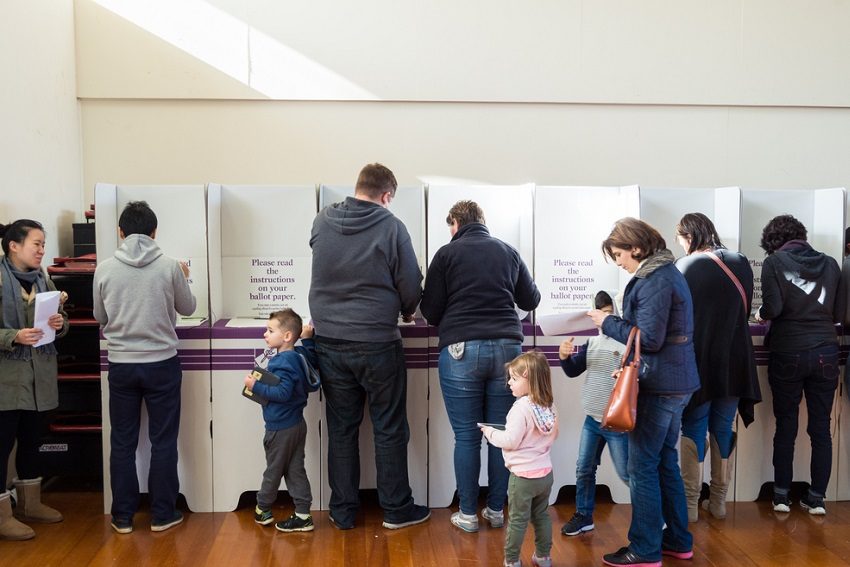Who deserves the vote of confidence?

Before voting in the upcoming state election, ask what the parties and candidates offer you and your community; think about their commitment to new industries and jobs and what they will deliver to the state’s social and physical infrastructure.
Jobs were always going to be one of the key state election issues. Despite the unemployment rate remaining relatively low there were widespread fears that the closure of the automotive industry would lead to a sharp rise in joblessness early in 2018. While the closure has put upward pressure on the unemployment rate, policy measures have helped to contain it to around six per cent over the past six months.
The key to this outcome has been a preparedness by the state government to maintain high levels of infrastructure investment in combination with large-scale industry transformation programs to support companies and workers affected by the auto closure. Investment in baseload renewables and battery storage has restored confidence in the state’s energy infrastructure and is now positioning South Australia as a global energy transition leader.
The last few years have been very difficult for South Australia. The loss of auto manufacturing not only led to large-scale job losses but also deprived us of one of our major drivers of investment in R&D and innovation. State government transition programs have helped to redeploy hundreds of workers and enable companies to diversify into other areas. Further investment will be needed to maintain the momentum generated by this. More broadly, sustained public investment in the state’s education and training system and a substantial boost to public sector R&D will be needed.
To be first movers in the digital economy, the state government needs to be an aggressive investor in digital infrastructure and the life-long learning necessary to take advantage of this. Shared infrastructure in industrial precincts can help to provide companies with access to the latest generation of equipment and digital technologies. While this is already happening to some extent, we need to scale it by establishing a network of world-class ‘Factories of the Future’ and industry test labs. Each of these must be a doorway to digital transformation, raise awareness of the advantages of engaging with the latest technologies and processes and foster innovation and commercialisation. In all of this, state government investment should be used to help leverage funding from the Australian government and industry.
My own assessment of the relative merits of state election policies will be informed by some real-world observations about the drivers of jobs and growth and how regions recover successfully from major economic shocks.
What the experience of other regions during the Global Financial Crisis (GFC) tells us is that public sector investment is fundamental for growth and jobs during periods of both stability and crisis.
The collapse in private sector investment following the GFC was made worse by austerity policies. Not surprisingly, nations, like Australia, that chose stimulus rather than austerity policies at the time of the crisis managed to contain rising unemployment. This is a lesson that economic rationalists will never accept. They still advocate the populist policy troika of privatisation, deep cuts to public services and substantial reductions in personal and business taxes. The course of recovery for nations and regions that adopted approaches like this during the GFC was much longer and more painful than it needed to be. Australia, on the other hand, experienced a period of slower but sustained growth, a foundation for recovery that others were envious of.
One of the great lessons of South Australian economic history is that major improvements in living standards are not simply a product of individual effort but rather a consequence of collective action, of the choices we have made as a community to public goods like universal health and education. Many of us regard these as the foundations for a fair and a prosperous society. Others regard them as commodities, as opportunities for profit taking. The position we take on this is ultimately a question of competing values.
Elections test our values. They challenge us to make choices, weighing up the benefits of policies for us individually, for our families, and for the communities and world we live in. We all need to take a close look at the policies on offer by all the major parties and candidates.
Don’t leave it until the last minute. Think about what those policies mean for you individually and then ask some broader questions about whether they will help build new industries and rewarding and secure jobs. Ask whether they will deliver great schools, universities and vocational education and training. How will they assist companies to adopt the latest digital technologies? What are they willing to invest in modernising our cities, suburbs and regions? Ask whether they have any plans to cut public sector expenditure on social and physical infrastructure or privatise public assets? And, what is their vision for the future of the state’s electricity sector given the failure of privatisation?
Start a check list now and make an informed judgement.